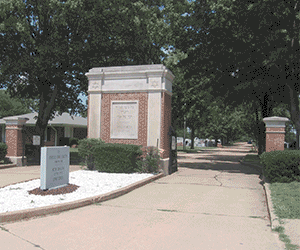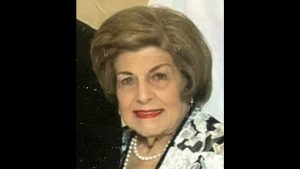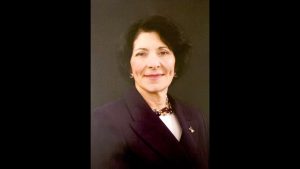Orthodox feminists meet
Published February 27, 2006
The theme of the Jewish Orthodox Feminist Alliance’s St. Louis Regional Conference at Bais Abraham Congregation revolved around Women and Men in Partnership, “emphasizing that the spiritual and religious needs of both men and women should be taken into account to assure the preservation of the Jewish people,” said Dr. Idana Goldberg, vice president of programming/education at JOFA, an international organization representing thousands of women and men committed to halacha and the belief that increased participation by women — privately and publicly — will enrich the Orthodox community.
A mix of men and women showed up on Sunday, February 20, to listen to the speakers, participate in the classes, and enjoy a special musical performance by the St. Louis Jewish Women’s Choir, led by Cantor Adina Frydman.
Phyllis Shapiro, who organized the event, said it was a great success and that you could “feel the buzz in the room.”
“It was especially good to see people from so many synagogues in attendance and to work with them in planning the event,” she said. “What a unique opportunity to hear speakers and Torah scholars of such high caliber exploring ideas and presenting a voice not widely available in our community.”
In speaking on the state of feminism and Orthodoxy today, Goldberg recognized that “the transformation in Judaism regarding women in the last century, and especially in the last 30 years, has been dramatic.”
Still, Goldberg noted many areas where there is still much room for growth.
She said she and her husband were disappointed to learn that when their daughter’s nursery school class had their weekly Shabbat party, the ima (mother) covered her head and lit candles while the abba (father) led kiddush and said hamotzi, exposing her “to a more limited view of gender roles than she sees at home.”
The idea of men and women sharing in the Shabbat rituals at an Orthodox Shabbat table was further addressed by Devorah Zlochozer, Rosh Beit Midrash and an instructor of Talmud and halacha at Drisha Institute in New York, who reviewed halachic sources pertaining to women participating in kiddush, hamotzi and zimmun, stating up front that her goal “is to set forth the argument that it is completely consistent with halacha that women may participate fully in these mitzvot.”
In addition to halachic arguments, Zlochozer led discussions about other barriers, such as societal and cultural factors that play a significant role as well.
After leading the group through different halachic sources, Zlochozer concluded, “the halacha is pretty clear, I think incredibly clear, that women have an equal obligation.”
“If we are going to take an approach in which women are not going to carry on the obligation of making kiddush for others then essentially what we are doing is we are enforcing a clear demarcation of gender roles,” she said. “I have no problem with people taking that option. That is not problematic. The problem, I think, comes in not realizing there are other options available and there are other decisions that can be made, and they are all valid in the eyes of halacha, and that at least for some people there is a price to be paid for not allowing full participation, and that we should acknowledge that and be open and clear about it.”
Similarly, Rabbi Dov Linzer, rosh yeshiva of Yeshivat Chovevei Torah Rabbinical School and a recipient of the Javits and Wexner graduate fellowships, said that while there is no obligation to make changes to the traditional Jewish wedding ceremony, halachically it is an option.
“I’m not here to dictate or to say that people need to do any of these things,” he said, “but I am here to discuss opportunities for couples that are looking for such opportunities and feel they would enhance the wedding ceremony.”
Looking at various components of the wedding ceremony, Linzer raised suggestons for different ways for the bride to participate, from a Kallah’s tisch to the bride and groom walking down the aisle together, to a woman’s participation in Sheva Brachot, and explained how each option falls within the parameters of a halachic Orthodox ceremony.
“Clearly, nowadays men and women enter the wedding with the understanding that they understand the marriage to be a partnership,” Linzer said. “Nevertheless, the traditional Jewish wedding ceremony often does not reflect that understanding of the marriage.”
While many of the suggestions made were noted as optional and certainly not obligatory, Rabbi Hyim Shafner did later suggest that Orthodoxy obligates one to use all of the tools in his or her possession to become closer to God.
“The function of the Torah is to have a connection with God and to create intimacy with the divine, and that is a really hard thing to do. We are given all these tools in halacha to use in our relationship with God, and to not use all the tools we have would really be a disgrace, and that is what we were doing, is looking at — specifically for women — what tools have not been used that could be used, and we are obligated to do that … It is not just about equality, it is about what Judaism is for, and to leave women’s voices out on the picture of spirituality is to miss perhaps half the Torah.”
For more information on JOFA e-mail [email protected] or visit www.jofa.org or call 212-679-8500.
Keren Douek is a staff writer and can be reached at [email protected]













